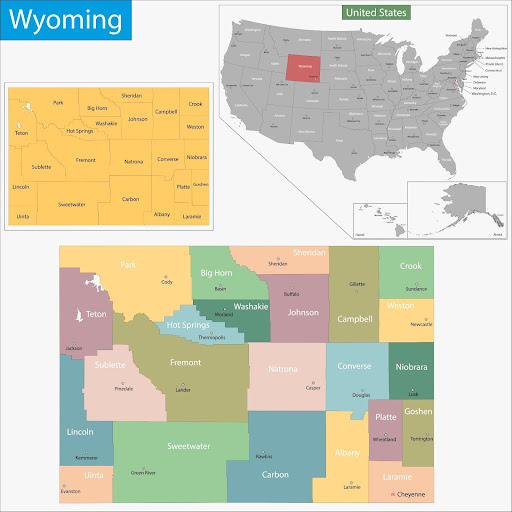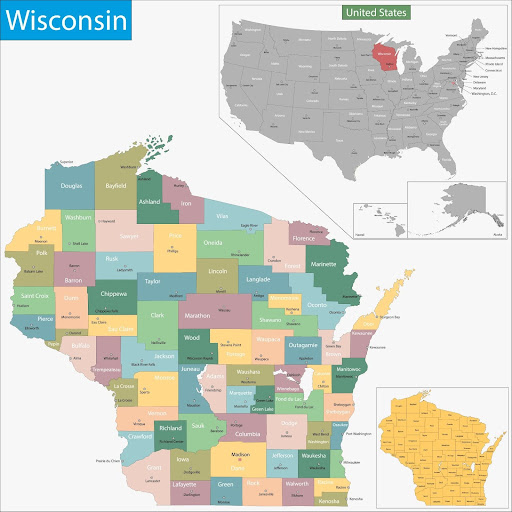Table of Contents
From wind-whipped grassfires on the high plains to stubborn holdovers in the ponderosa belt, New Mexico’s fire landscape is as varied as its elevation map. For fire investigators, that means no two cases look alike, and no protocol works everywhere.
Whether you’re a seasoned investigator working out of Capitan or a new recruit shadowing a district FMO, here’s your operational field map. You’ll find agency contacts, dispatch links, training tracks, and an honest look at where, how, and why fires are starting in the Land of Enchantment.
Let’s dive into this guide on wildland fire resources in New Mexico.
If you need a quick foundation beyond New Mexico, use our wildland firefighting resources.
Live Incident Updates & Maps
Stay ahead of active fire behavior with these real-time monitoring tools:
State Overview
New Mexico is a high-desert paradox, stunningly dry, yet prone to explosive fire behavior when conditions align. Its wildfire profile shifts with every mesa, canyon, and piñon-juniper slope.
- High Plains & Eastern Grasslands: Fast-moving grassfires dominate here, often ignited by farming equipment or downed lines during wind events.
- Central Highlands: Ponderosa and mixed conifer forests with heavy duff layers are ideal conditions for smoldering holdovers and sleeper fires.
- Northern Mountains: Terrain-driven fires with deep canyons and limited access make for slow, high-complexity investigations.
- Southwest Deserts: Sparse fuels can fool newcomers; don’t underestimate the spread potential of red flag days in these zones.
- WUI Encroachment: Communities like Ruidoso, Los Alamos, and Santa Fe are seeing growing wildland-urban interfaces with complex interagency coordination needs.
Wildfire Season Timeline
While New Mexico's fire calendar is stretching, key peaks remain fairly consistent:
- Spring (March–June): The dominant season. Hot, dry, and windy, with fires igniting from escaped burns, equipment use, and roadside activity. Investigators should expect red flag conditions and single-tree torching even at lower humidities.
- Monsoon Transition (July–August): Lightning-driven ignitions are common, especially across forested regions in the north and west. Rain may suppress surface fire, but fuel ladders stay dry.
- Fall (September–October): A secondary peak. Wind events and agricultural activity can trigger fast runs in cured grasses. Fall investigations often involve equipment-related or structure-proximate ignitions.
Key State Agencies Involved
New Mexico Forestry Division (EMNRD): New Mexico’s lead state agency for wildland fire suppression, fuels treatment, and investigation coordination on non-federal lands. Investigators may work directly with district-level Fire Management Officers or regional fire investigators trained in NWCG protocols.
New Mexico State Fire Marshal’s Office: Handles structure fire investigations and supports training and certification across the state. Works in tandem with county officials for mixed-use or WUI fires where origin points intersect structures.
New Mexico Department of Homeland Security & Emergency Management (DHSEM): Supports resource mobilization, IMT deployment, and communication networks during large-scale incidents. Investigators may be looped in during multi-jurisdictional fires through DHSEM-coordinated response planning.
Tribal Fire Management Agencies: Tribes like the Mescalero Apache and Jicarilla Apache have their own fire programs, including Type 2 IA crews and dispatch centers. Coordination is essential for incidents crossing onto or originating from tribal lands.
U.S. Forest Service (USFS) & Bureau of Land Management (BLM): Federal partners manage vast tracts in the Gila, Carson, Cibola, and Lincoln National Forests and across southwestern rangelands. Expect NWCG adherence, federal reporting protocols, and LEI (Law Enforcement and Investigations) involvement on all major incidents.
Local Wildland Firefighting Resources
Initial attack in New Mexico is often a patchwork effort anchored by local VFDs, county wildland task forces, and seasonal state crews. The boots on the ground might vary, but coordination is key. Investigators frequently rely on first-due units for eyewitness reports, origin protection, and early scene isolation.
List of Local/State/Federal Fire Response Agencies
New Mexico Forestry Division Districts: Each district (like Socorro, Cimarron, and Capitan) houses full-time fire staff, engines, and regional investigators trained in wildland origin and cause.
State Fire Marshal & Local Fire Departments: Critical for WUI scenes, where structural involvement may precede or follow the wildland ignition. Structure-side suppression records can provide vital ignition data.
County Emergency Managers: Play a central role in interagency communication, especially where evacuations, ICS coordination, and multi-agency resource orders are involved.
Volunteer Fire Departments (VFDs): New Mexico has over 300 VFDs, many of which are the first to respond to rural ignitions. While some lack specialized wildland equipment, they often hold crucial initial scene knowledge.
BLM & USFS Fire Management Teams: These federal teams handle suppression and investigation on federal land. The Gila National Forest, in particular, is a known hotspot with recurring large fires and a complex investigation history.
Contact Numbers and Emergency Links
To Report a Wildfire: Dial 911New Mexico Forestry Division Dispatch: https://www.emnrd.nm.gov/Southwest Coordination Center: 505-842-3473 | https://gacc.nifc.gov/swccInciWeb (Federal Incident Portal): https://inciweb.nwcg.gov
Training & Volunteering
Wildland fire training in New Mexico is grounded in NWCG standards, with many state and federal partners offering seasonal academies, on-the-job instruction, and fireline exposure for new investigators or firefighter trainees.
NWCG-Approved Academies and Centers
Southwest Fire Academy (SWFA): Held in various locations across the state each spring and fall. Offers S-130/190, L-180, and FI-210 courses, as well as advanced investigation refreshers. Hosted in partnership with SWCC and multiple state agencies.
New Mexico State Forestry Training Division: Provides mobile training units, agency-hosted fire investigation workshops, and in-person certifications for red card qualifications. Many sessions are open to local departments and volunteers.
Federal Centers: BLM and USFS run seasonal training programs in Albuquerque, Silver City, and Taos. These include hotshot crew orientations, helitack training, and investigative shadow opportunities.
Volunteer and Seasonal Training Opportunities
Emergency Firefighter (EFF) Program: Each spring, the state trains seasonal firefighters for wildland deployment. Many support suppression mop-up, patrol, and basic investigation documentation, especially in rural incidents.
VFD Wildland Modules: Local departments can apply for state-funded wildland gear and training to build Type 6 engine crews. Many volunteers in these modules also shadow state investigators.
Tribal Wildland Fire Internships: Several tribal programs offer seasonal intern positions where participants gain firsthand experience in fuels mitigation, prescribed burns, and post-fire origin analysis.
Stay Informed on New Mexico’s Wildland Fire Landscape
New Mexico is drying faster. Snowpack evaporates rather than melts, fuels cure earlier, and fire seasons begin long before some agencies are staffed up. For fire investigators, that means earlier calls, longer seasons, and increasingly volatile behavior patterns.
Stay sharp. Stay ready. That means not only updating your NWCG quals but also building relationships with your local dispatchers, understanding burn permit protocols by district, and keeping an eye on real-time indices like ERC and Haines values. The next ignition could be from a pile burn gone wrong, or a lightning strike that simmers for days before it flares.
FAQs
How do I report a wildfire in New Mexico?
Call 911 first. You can also contact your local Forestry Division district office or the Southwest Coordination Center directly for large-scale or federal incidents.
Who investigates wildfires in New Mexico?
Depends on land jurisdiction. State Forestry handles state and private land. USFS and BLM lead investigations on federal land. Often, tribal, local, and federal agencies collaborate on shared incidents.
Can I conduct a prescribed burn in New Mexico?
Yes, but permits are required. Contact your county or local fire department. During high-risk periods, burn bans may override permits, especially under red flag warnings.










